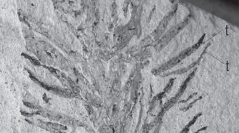

 Cryptogamie, Algologie
27 (4) - Pages 357-379
Cryptogamie, Algologie
27 (4) - Pages 357-379The use of aquatic fossil macrophytes for the determination of ancient trophic situations is explored in the Late Miocene lake of La Cerdanya (Eastern Pyrenees, Catalonia, Spain). Aquatic plant remains occur in a 400 m thick lacustrine succession, Vallesian in age. Palustrine claystones and lignites grade horizontally to open lake diatomites and pass upwards to shallow lacustrine claystones and deltaic arkosic sandstone. Three different aquatic plant assemblages were identified in these facies: (1) Palustrine deposits with abundant fruits and pollen from Trapa ceretana, indicative of eutrophic water conditions, (2) Lacustrine diatomites with Potamogeton orbiculare, Ceratophyllum schrotzburgense macroremains, Nymphaeaceae and Myriophyllum. This assemblage is comparable to extant communities of mesotrophic lakes. (3) Deposits of late lacustrine infilling stages contain abundant Lychnothamnus barbatus subsp. megalicarpus gyrogonites, indicating oligotrophic and alkaline water conditions. The results show how the lake of La Cerdanya was largely eutrophic to mesotrophic in origin but shifted towards more oligotrophic and alkaline conditions in its later infilling stages. The taxonomic status of Trapa ceretana is briefly reviewed and an emended diagnosis is provided. Neotypes are erected for this species and for Potamogeton orbiculare.